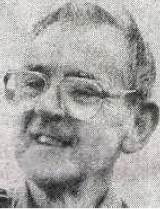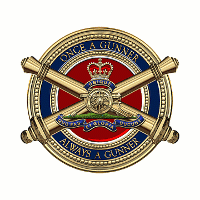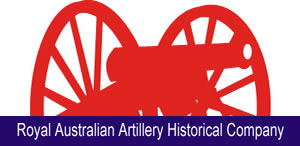 |
|
He had two major passions in his life - the Army and birds. The former gave him livelihood but his fascination with the latter began first. George Selwyn (but everyone called him Bill) Lane showed an interest in birding when he was just seven years old. His military career began at the age of 18, in 1940, when he joined the 77th Willoughby as a day boy, pending his full time enlistment in the army. Lane served in the 2/9th Australian Field Regiment in the Middle East and New Guinea. He was discharged from the AIF as a sergeant and continued serving in the Citizens Military Force (CMF). In 1949 he attained the rank of lieutenant, being the first officer to be promoted postwar. Lane remained with the CMF until 1970 when he retired as HQ Officer Training Group, Eastern Command, as a full Colonel. Every year he marched in Sydney's Anzac Day Parade, even managing to attend the 1999 march, despite the battle he was then fighting, and now has lost, with cancer.
Lane joined the Royal Australasian Ornithologists' Union (RAOU) in 1947 and became Vice President of its council from 1967 to 1969; he was made a fellow in 1983. He was awarded the inaugural John Hobbs Medal for avian research by an amateur in 1996.
|
Lane was also chairman of the combined RAOU/Zoological Society Ornithological Group, where he shared management with other well-known ornithologists like Keith Hindwood and Arnold McGill. He was an original member of the NSW Field Ornithologists Club. He became interested in bird banding in 1956 following a visit to Lion Island. In 1958 he organised the Sydney albatross banding group, which perilously went to sea in small tin boats to capture and band the albatrosses that came to feed at the then Malabar sewage outlet. It was 1961 when Lane became the regional organiser for the Australian Bird and Bat Banding Scheme in 1961; he held that position for 36 years. However, he is also well-known for his publications about, and research into, silvereyes and shearwaters. The editor of the Australian Bird Bander, and its successor, Corella, he also edited the Seabird Island Series in the two journals and contributed more than 240 articles about the breeding seabirds of the islands off the coast of Australia. By 1993 he had made 300 trips to 100 islands. The resource data of the flora and fauna of each island remains a solid foundation for future studies and biodiversity conservation. Lane also published 168 articles in leading Australian journals.
While living in Lane Cove, Lane would take his family - his wife, Lorraine, and their children, Trevor and Barbara, and others who wanted to come along - to band birds at North Ryde, Scheyville and a location six kilometres west of Fairy Meadow. The resource material gained from those regular trips was one of the reasons why in recent years the State Government included those same areas into Scheyville, Lane Cove and Royal National parks respectively. Lane loved to share his experiences; he was on the speakers' circuit for most of the bird clubs of NSW and launched many people, young and old, into careers in ornithology. In 1982 the West Australian government wanted to name an island off Esperance after him for his pioneer work there. Typically, he asked for it to be named for Lorraine (who survives him, as do their two children). Lane does have his own memorials - the hundreds of letters received by the family from people who first gained their love of birds from him. His extensive library, slides and notes will be preserved in state and national libraries.
Acknowledgments:
• Reprinted from an article in the Avicultural Society of New South Wales (ASNSW) Publication by Miriam Edgar
|







